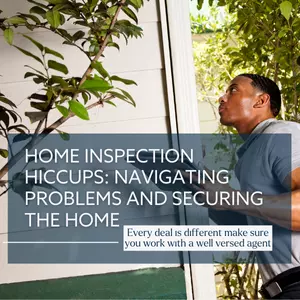A Guide To Getting Your Security Deposit Back
Moving out is the WORST. There are absolutely no doubts about that. Packing all your stuff up while you’re still trying to live in the home, hauling heavy furniture, patching up all the holes you swore you wouldn’t make in your walls… It's just no fun. There are few silver linings, though. One is finding all the stuff you lost over the term of your lease (turns out your universe didn’t eat your favorite sweater behind your sofa). The other is that sweet, sweet security deposit check you get back after you’re all done.
Depending on how much your rent is and what your landlord charged for the deposit at the beginning of your lease, that could be hundreds (maybe thousands!) of dollars in your pocket. Doesn’t that make moving out sound worth it? But before you can start making it rain, you have to pass the dreaded move out inspection (dun dun dunnn). Luckily for you, you’re about to learn exactly how to do that, and how not to get stuck unnecessarily cleaning and fixing things that aren’t your responsibility.
Leave it how you found it
First things first, if you have photos of the apartment from the day you moved in, you are already off to a great start. The biggest rule of thumb when it comes to rentals is that you should leave it just as you found it. Documenting a rental when you move in for any imperfections that could be blamed on your once move-out comes around is a great way to protect yourself from unnecessary charges, unnecessary work, and added stress. If you don’t have photos but do have a checklist of imperfections that were there when you arrived, that will help too. Even better if that list and/or photos were shared with your landlord when you moved-in.
Know what is and is not your responsibility
Some deterioration in a home is a normal consequence of living in it. Landlords are held responsible for the upkeep of the property and repairs of any “normal wear and tear.” You, the tenant, are responsible for any damages outside of this scope. This can be a little vague, so let me break it down for you.
Normal wear and tear: “expected deterioration of the dwelling and its fixtures resulting from ordinary and expected use.”
Examples of normal wear and tear:
-
Cracking, peeling or fading paint
-
Floors needing new coating
-
Sticking doors
-
Faded carpet
-
Loose grouting
-
Worn bathroom enamel
Examples of Damage: -
Scratched, dented or removed paint
-
Chipped, stained or burned flooring
-
Doors off hinges
-
Stained carpet
-
Clogged toilet
-
Chipped enamel
-
Holes in the walls
Damage will need to be repaired by you prior to move out. If you fail to do so, your landlord can deduct money from your security deposit for each repair they have to make. Oftentimes their repairs will cost you a lot more than if you DIY, so time to hit the Lowe’s for some touch up paint!
Clean it up!
Just like you don’t return a rental car with a big mess on the floor that wasn’t there when you picked it up, you can’t vacate your rental home and leave it totally dirty! Cleaning fees will also eat away at your precious deposit money. Make sure to vacuum, mop up any hardwood floors, put some elbow grease into your kitchen appliances and bathroom fixtures. It doesn’t have to sparkle, but it does have to be in good condition. As a bonus, the cleaner it looks, the more kindly it will be judged upon inspection.
It is important to note that under Pennsylvania law, landlords have a 30 day window to provide you with:
A. Your full security deposit plus any interest (if it was in an interest bearing escrow account, that would have been noted on your lease)
B. Partial deposit refund with an ITEMIZED list of repairs that were deducted and the cost of each.
C. An invoice and itemized list of repairs that exceeded the amount of your deposit.
If this is not done within 30 days, the landlord loses the right to take any amount of money from your deposit for any reason. The only exception to this is if you failed to provide your forwarding address and the date you moved out. If the 30 days have passed and you still don’t have your check, it’s time to contact your old landlord. You are entitled to those funds.
You may be able to manifest your deposit return with the power of good vibes, but you’re even more likely to make it happen with the power of information that you now hold! You WILL survive this move and you WILL come out on the other side with money in your pocket! Now get yourself a paint sample and head over to the hardware store. Pick up some cleaning supplies while you’re there and show your landlord what a clean, completely responsible tenant you’ve been (who totally never scratched the walls while moving in a couch)! You’ve got this.
Categories
Recent Posts










GET MORE INFORMATION


